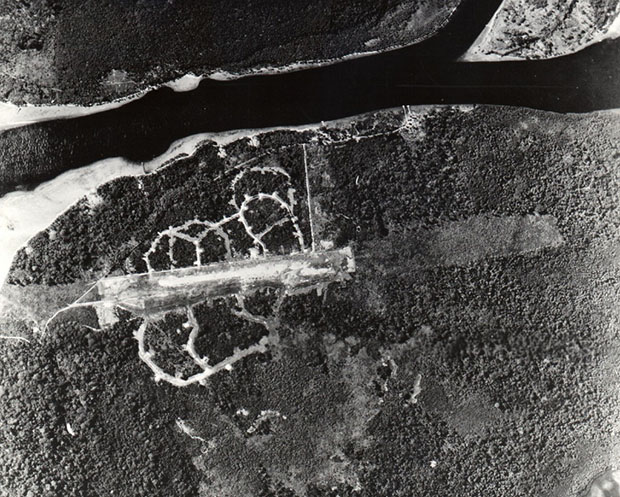A South Pacific photograph taken early on during the Second World War has received recognition as the most honored historical image in the history of America. It was taken by a nine-man team during a reconnaissance flight in 1943, and is much more important than it looks to many at first glance.
Jay Zeamer flew co-pilot on a B-26 bomber at the start of the war. He was not known as one of the best pilots in the air, having fallen asleep at the helm while under heavy fire. Zeamer did not fully take the role of pilot until he received honors for a photoreconnaissance flight over a Japanese base, a flight he pulled off without full qualifications. While Zeamer had not joined the war to take photographs, he soon found he enjoyed this type of mission.
Zeamer’s first mission was the catalyst in his career, which continued with him leading a group of underdogs known as the Eager Beavers. Needless to say, none of these men were honored when they began their career with Zeamer. The Beavers were comprised wholly of men who, like Zeamer, had garnered reputations as men who no others wanted to accompany them on missions. The crew was allowed to stay in the military under one extreme stipulation—any missions for which no one else was willing to volunteer became theirs. Their crew became complete with the addition of one more misfit, a busted-up B-17 plane dubbed “Old 666” in reference to the last few digits of its serial number.
Although they were not technically combat pilots, the Eager Beavers had more of a thing for heavy weaponry than they did for photographs. Their plane was fully outfitted with double 50-caliber machine guns, with one pair front-mounted so the pilot could control them himself. They even had extras on board, just in case.
The mission that produced the honored photograph was a mission to Buka, to photograph what were believed to be numerous Japanese airfields. They showed honor from before the mission even began, when their bombardier Joseph Sarnovski agreed to forego the end of his career three days later to assist his friends in the mission.
Buka was heavily guarded, but still their photographer, William Kendrick, was prepared to do his duties. Well over 20 Japanese fighters took off and prepared to assault the Beavers as they flew into Buka’s airspace. The plane suffered massive damage in the first sweep of enemy fire, and several of the Beavers sustained damage as well. This did not dissuade them from completing the mission. Kendrick continued taking photographs while the rest of the Beavers fought off the attack until the Japanese ran out of ammo and fuel. Sergeant Able, one of the gunners, had to take over the flight as Zeamer again fell asleep in the cockpit—this time due to loss of blood. Bombardier Sarnovski became the only casualty of the mission, never to see the retirement he had come so close to achieving, the Peta Pixel reports.
Zeamer took full year to recover from his injuries, but ultimately survived. The photographs, however, were one of the most surprising assets on the plane to receive literally no damage whatsoever after the plane was hit by literally hundreds of bullets. Two members of the crew were to receive Medals of Honor—Sarnovski receiving it posthumously, and Zeamer receiving it for his perseverance as a pilot. The other Beavers all received the Distinguished Service Cross, awarded for bravery. The Service Cross is the highest accolade they could have achieved next to the Medal of Honor.
And so it was that one of the most highly lauded airspace mission in American history was actually a reconnaissance mission. The honored photographs, which claimed the life of a soon-to-retire bombardier, may have saved the lives of numerous other pilots flying on missions through Buka. Not only was the most honored photograph in American history taken that day, but that mission saw the birth of the most honored team of underdogs in the history of WWII.
//
